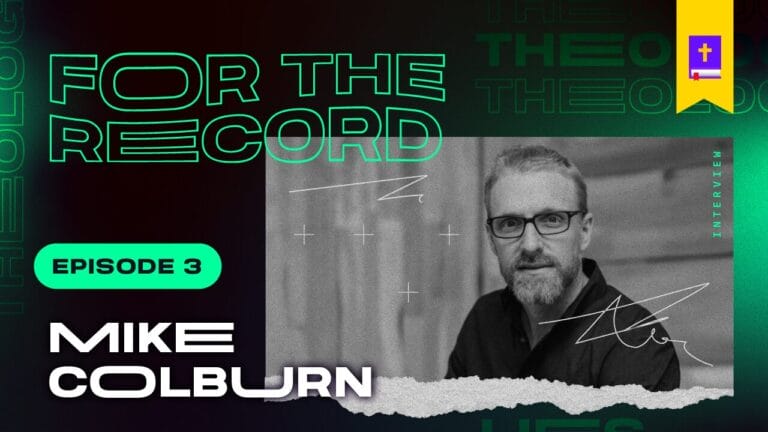Adventist Teaching: Themselves
Biblical Teaching: All of God’s people in all ages called out of the world
The Adventist Church arrives at the conclusion that they are the remnant of Revelation (as well as the 144,000 of Revelation 7:4) because of Revelation 12:17—claiming that the word “commandments” refers to the 10 Commandments and that they are the only ones upholding all ten. They also point to the phrase “the testimony of Jesus” and link this with Revelation 19:10 which says the “spirit of prophecy is the testimony of Jesus”. They insert into “spirit of prophecy” the supposed prophetic gifting of Ellen G. White and say the testimony of Jesus is wherever Jesus is speaking. Thus, because he spoke through Ellen White, they bear the marks of the last day remnant who has the “spirit of prophecy” and “the testimony of Jesus”.
There are many problems with this, but the primary ones are definitions. In his New International Greek Testament Commentary on Revelation, Dr. G.K. Beale explains what is the most viable understanding of the remnant where he writes:
That “the rest of her seed” [remnant] in v 17 (Rev. 12:17) is to be linked with Christ in vv 5 (Rev. 12:5) and 13 (Rev. 12:13) is probable since only those verses in all of vv 1-16 (Rev. 12:1-16) refer to a firstborn offspring. Such a contrast between individual and corporate seeds is supposed by observing that v 17 alludes to Genesis 3:16, where John would have seen that Eve’s messianic seed has both individual and corporate meaning ( as also did Jewish interpretation; for the wider notion of corporate representation in biblical literature see on Rev. 1:20). Consequently, the point of vv 13-17 is that the one heavenly church being persecuted on earth cannot be destroyed because it is heavenly and ultimate inviolable spiritually, but the many who individually compose the church can suffer physically from earthly dangers. In relation to Revelation 11 this means that the woman is equivalent to the spiritually invincible inner court of the temple and her “seed” equivalent to the outer court, which is susceptible to physical harm.
Dr. G.K. Beale, New International Greek Testament Commentary on Revelation, pg. 677
The “remnant” is more than likely referring to all Christians in all ages and a point of contrast is being made between the fact that the church is pure and invincible with Jesus as her head, yet the individual members that make up the Body of Christ can still be persecuted despite this and physically harmed. The book of Revelation was originally written as encouragement to Christians in the first or second century who were about to undergo severe persecution which makes this understanding most logical as well as allows for it to have transcendent application to the modern Christian, not just those in antiquity.
Dr. Beale continues by saying:
Accordingly, vv 6, 13-17 (Rev. 12:6, 13-17) portrays the devil as beginning his attack against the church in the church’s early stages in order to destroy it quickly and continuing the attack as long as the church exists. The pictorial distinction between the woman and her seed could represent the distinction between the early Jewish church and the church’s subsequent Jewish and Gentile growth. But there is no intention to distinguish between a Jewish church and a later Gentile church, since the church continued to contain a remnant of Jews. Nor is there a distinction between an earlier Gentile church and a latter Jewish remnant of 144,000 living during a severe tribulation of the final few years of history. Nor is there a distinction between the whole nation and a remnant in the nation existing during the same period.
The description of the seed as “those who keep the commandments of God and who hold the testimony of Jesus” is open ended and points to an including of Jews and Gentiles. Indeed, there is no clear indication elsewhere in the Apocalypse that John emphasized any national distinctions in the church. The description here probably connotes how all the earthly church throughout the ages withstands the devil’s attacks (according to Ladd’s and Beckwith’s view), though very possibly the verse depicts how the last historical stage of the church’s offspring withstands Satan’s oppression….the church gives the same testimony as Jesus. We have concluded already in the comments on Rev. 1:2 that the phrase “testimony of Jesus” is intentionally ambiguous, including both the “testimony from Jesus” given to the church and the “testimony to Jesus” given by the church. The focus of the phrase may be on Jesus’s testimony to God, which the church is to reproduce.
Dr. G.K. Beale, New International Greek Testament Commentary on Revelation, pg. 678-9
The remnant in view are simply all believers at all times who are attached to Jesus Christ by faith whom the Devil wages war against—he has been doing this in all ages as this text has application from the 1st century through to today. The Devil hates all true believers, not just those professing to be Christian that go to church on Saturdays.
The major issue for the Seventh-day Adventist Church’s historicist interpretation of the text (over and against Beale’s Modified Idealism) is it’s denuding of the text from history. Explaining the issues for the historicist school of interpretation, Beale also writes:
There are many versions of the historicist approach. Historicist interpreters generally see Revelation as predicting major movements of Christian history, most of which has been fulfilled up to the time of the commentator. The majority of these commentators have understood the seals, trumpets, and bowls as unfolding successive events of history in general chronological order. Christ’s final coming is usually seen as very imminent. Typically this view identifies parts of the Apocalypse as prophecies of the invasions of the Christianized Roman Empire by the Goths and the Muslims. Further, the corruptions of the medieval papacy, the reign of Charlemagne, the Protestant Reformation, and the destruction wrought by Napoleon and Hitler have been seen as predicted by John.
This view tries to identify historical movements too specifically and limits the prophecies of the Apocalypse to Western church history, leaving aside the worldwide church. Proponents of this view living at different periods of church history cannot agree with one another, since they limit the meaning of the symbols only to specific historical referents contemporary with their own times. Another weakness of this approach is that such a projection of future history would have had little little relevance to the first-century readers of Revelation.
Dr. G.K. Beale, New International Greek Testament Commentary on Revelation, pg. 46
This is primarily why we reject the SDA Church’s interpretation and see it as lacking a full orbed understanding. It limits the “remnant” to a 19th century group that would have had zero significance to the original audience the Apocalypse was penned to and is arrived at through a strictly Western understanding of church history.










